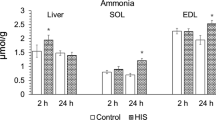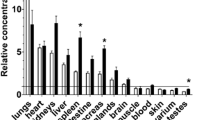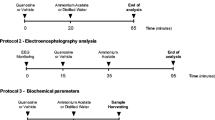Abstract
Using dose-responce curves, the dose of NH4Ac inducing coma in one-half of the animals was increased by 60 to 80% after 1 mmol of arginine. The larger increase occurred in larger rats but was not proportional to the increase in weight. Incremental subcoma doses of NH4 raised the amount of NH4 required for inducing coma and the brain level of ammonia at the point of coma. After a portacaval shunt the results were similar, although lower doses of NH4 were required from the beginning. Blood ammonias after a loading dose (1.25 mmol) of NH4 were influenced by the duration of a preinfusion of NH4 and by the preinjection of various amino acids involved in the disposal of NH4 in the urea cycle. The amount of reduction in blood ammonia by ornithine and arginine compounds was less the longer the preinfusion of NH4. Blood ammonia was not lowered by glutamate at any time but was increased with longer preinfusion periods. Hepatectomy (Hx) reduced the removal of an NH4 load. After a modest load (0.85 mmol) of NH4, blood ammonia increased 5-fold, over that of shamoperated rats, with 70% Hx and 15-fold with 90% Hx. Ornithine reduced these blood ammonias by about 50%. Arginine had no effect. These studies indicate ways of reducing toxicity of NH4 and factors that predispose to or enhance toxicity.
Similar content being viewed by others
References
Conn, H. O., and Lieberthal, M. M. (1979).The Hepatic Coma Syndromes and Lactulose, Williams and Wilkins, Baltimore, pp. 50–51.
Fick, T. E., Schalm, S. W., DeVlieger, M., van der Rijt, C. C. D., and DeKnegt, R. J. (1988). A longterm ammonia infusion simulating acute hepatic failure in rabbits. In Soeters, P. B., Wilson, J. H. P., Meijer, A. J., and Holm, E. (eds.),Advances in Ammonia Metabolism and Hepatic Encephalopathy, Elsevier, Amsterdam, pp. 394–399.
Greenstein, J. P., Winitz, M., Gullino, P., Birnbaum, S. M., and Otey, M. C. (1956). Studies on the metabolism of amino acids and related compoundsin vivo. III. Prevention of ammonia toxicity by arginine and related compounds.Arch. Biochem. Biophys. 64: 342–354.
Greenstein, J. P., DuRuisseau, J. P., Winitz, M., and Birnbaum, S. M. (1957). Studies of metabolism of amino acids and related compoundsin vivo. VII. Ammonia toxicity in partially hepatectomized rats and the effect of L-arginine. HCl thereon.Arch. Biochem. Biophys. 71: 458–465.
Raabe, W., and Onstad, G. (1985). Porta-caval shunting changes neuronal sensitivity to ammonia.J. Neurol. Sci. 71: 307–314.
White, L. P., Phear, E. A., Summerskill, W. H. G., and Sherlock, S. (1955). Ammonium tolerance in liver disease: Observations based on catheterization of the hepatic veins.J. Clin. Invest. 34: 158–168.
Zieve, L. (1986). Conditional deficiencies of ornithine and arginine.J. Am. Coll. Nutr. 5: 167–176.
Zieve, L., Lyftogt, C., and Raphael, D. (1986). Ammonia toxicity: Comparative protective effect of various arginine and ornithine derivatives, aspartate, benzoate and carbamyl glutamate.Metab. Brain Dis. 1: 25–35.
Author information
Authors and Affiliations
Rights and permissions
About this article
Cite this article
Zieve, L., Charboneau, D. & Lyftogt, C. Studies of ammonia loading: Effects of rate of delivery and enhanced removal of NH4 on blood levels of ammonia and coma induction. Metabolic Brain Disease 4, 113–120 (1989). https://doi.org/10.1007/BF00999389
Received:
Accepted:
Issue Date:
DOI: https://doi.org/10.1007/BF00999389




